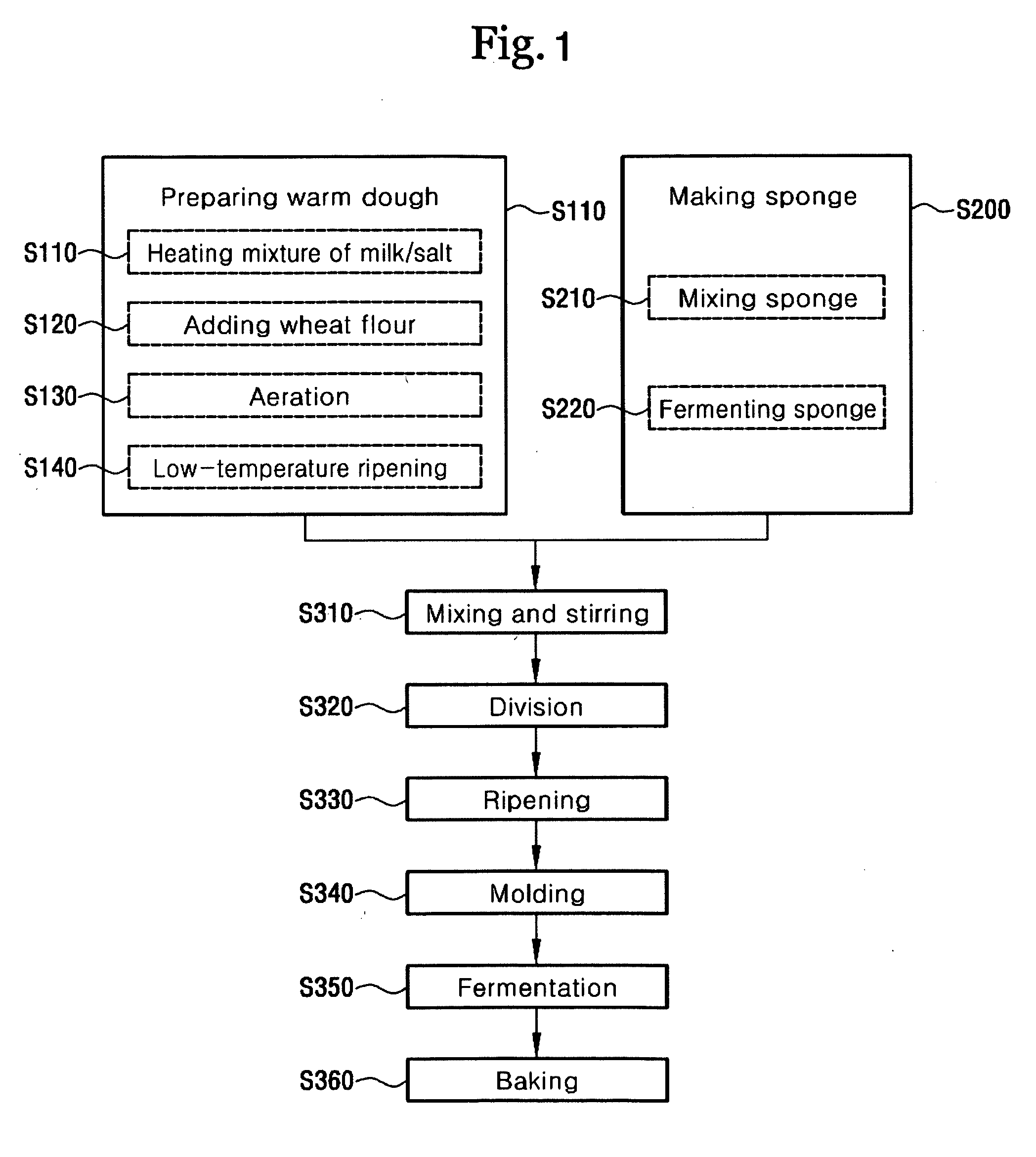Method of making bread
a technology of aerated bread and yeast, applied in the field of bread, can solve the problems of deteriorating speeding up the aging process, and affecting the flavor, texture and chewy taste of aerated bread, so as to improve the activity and fermenting power of yeast, improve the taste, flavor and texture of bread, and improve the effect of aging process
- Summary
- Abstract
- Description
- Claims
- Application Information
AI Technical Summary
Benefits of technology
Problems solved by technology
Method used
Image
Examples
embodiment
[0036]A mixture of milk and salt was heated at 60° C. for 30 minutes and again heated to 95° C. Then, wheat flour was added to the heated mixture to be aerated and then stirred to form a warm dough. During stirring, the temperature was maintained at 60 to 65° C. Subsequently, the warm dough was ripened in a refrigerator at low temperature for more than 12 hours. At this time, the mixing ratio of wheat flour, salt, and milk was maintained at 20:0.2:20.
[0037]Separately from the warm dough, wheat flour, dried yeast, yeast food, bread improver, salt, and water were mixed at a mixing ratio of 70:0.6:0.03:0.5:0.2:46 and at a temperature of 18 to 19° C., and then fermented in a fermentation room at 17° C. for 12 hours, thus forming a sponge.
[0038]Then, the thus formed warm dough and sponge were mixed with a mixture of wheat flour, salt, butter, dried yeast, dried milk, sugar, egg, and water and stirred at a low speed of 30 rpm and at a high speed of 60 rpm alternately, thus forming a dough...
PUM
 Login to View More
Login to View More Abstract
Description
Claims
Application Information
 Login to View More
Login to View More - R&D
- Intellectual Property
- Life Sciences
- Materials
- Tech Scout
- Unparalleled Data Quality
- Higher Quality Content
- 60% Fewer Hallucinations
Browse by: Latest US Patents, China's latest patents, Technical Efficacy Thesaurus, Application Domain, Technology Topic, Popular Technical Reports.
© 2025 PatSnap. All rights reserved.Legal|Privacy policy|Modern Slavery Act Transparency Statement|Sitemap|About US| Contact US: help@patsnap.com


